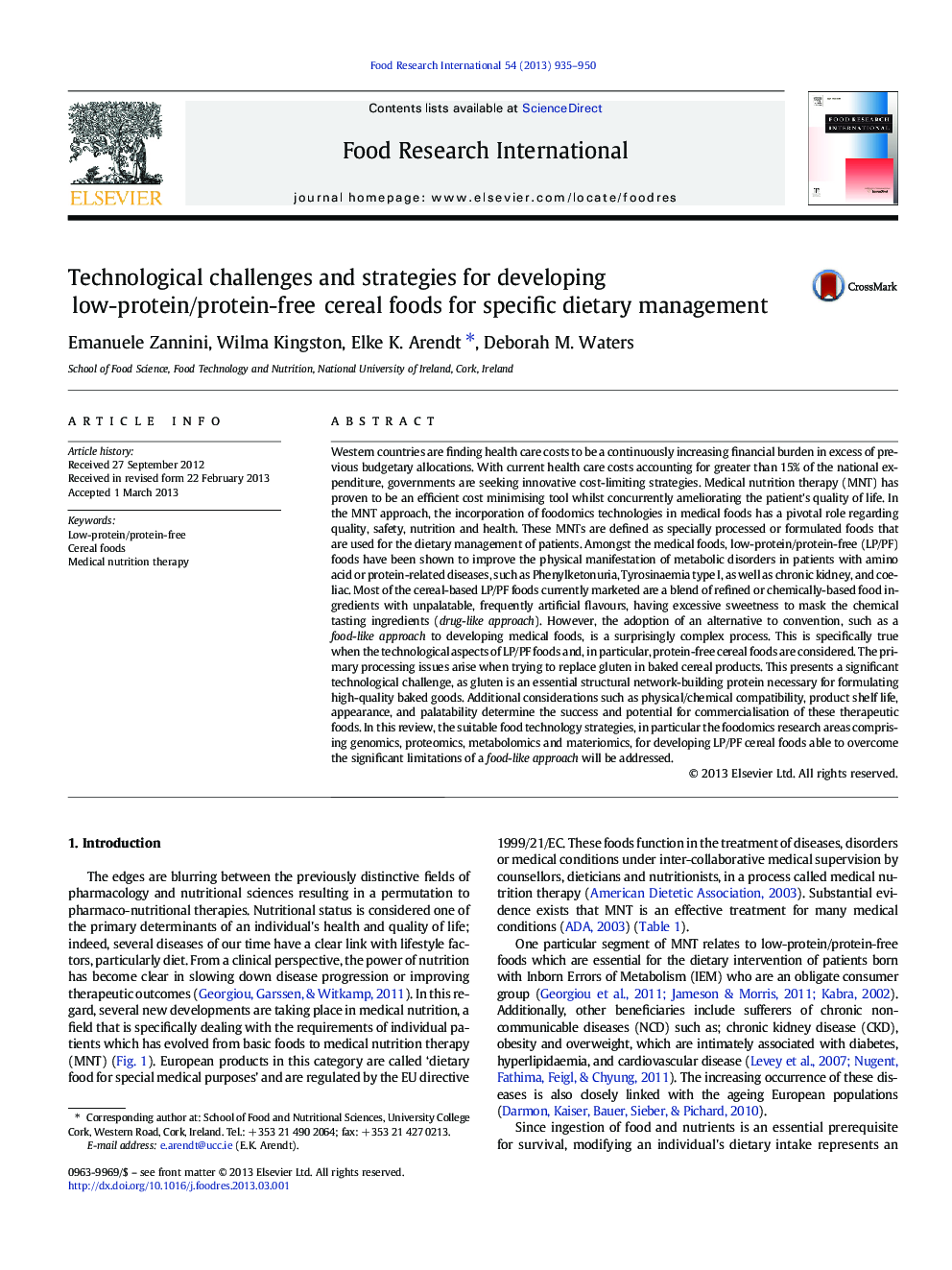| Article ID | Journal | Published Year | Pages | File Type |
|---|---|---|---|---|
| 6397048 | Food Research International | 2013 | 16 Pages |
Western countries are finding health care costs to be a continuously increasing financial burden in excess of previous budgetary allocations. With current health care costs accounting for greater than 15% of the national expenditure, governments are seeking innovative cost-limiting strategies. Medical nutrition therapy (MNT) has proven to be an efficient cost minimising tool whilst concurrently ameliorating the patient's quality of life. In the MNT approach, the incorporation of foodomics technologies in medical foods has a pivotal role regarding quality, safety, nutrition and health. These MNTs are defined as specially processed or formulated foods that are used for the dietary management of patients. Amongst the medical foods, low-protein/protein-free (LP/PF) foods have been shown to improve the physical manifestation of metabolic disorders in patients with amino acid or protein-related diseases, such as Phenylketonuria, Tyrosinaemia type I, as well as chronic kidney, and coeliac. Most of the cereal-based LP/PF foods currently marketed are a blend of refined or chemically-based food ingredients with unpalatable, frequently artificial flavours, having excessive sweetness to mask the chemical tasting ingredients (drug-like approach). However, the adoption of an alternative to convention, such as a food-like approach to developing medical foods, is a surprisingly complex process. This is specifically true when the technological aspects of LP/PF foods and, in particular, protein-free cereal foods are considered. The primary processing issues arise when trying to replace gluten in baked cereal products. This presents a significant technological challenge, as gluten is an essential structural network-building protein necessary for formulating high-quality baked goods. Additional considerations such as physical/chemical compatibility, product shelf life, appearance, and palatability determine the success and potential for commercialisation of these therapeutic foods. In this review, the suitable food technology strategies, in particular the foodomics research areas comprising genomics, proteomics, metabolomics and materiomics, for developing LP/PF cereal foods able to overcome the significant limitations of a food-like approach will be addressed.
â¢CKD and IEM patients have special low-protein/protein-free dietary requirements.â¢Current cereal-based medical foods are unpalatable with poor patient adherence.â¢Multi-faceted approach will improve the foods' technological/ nutritional aspects.â¢Foodomics applications explored: genomics, proteomics, materiomics and metabolomics.â¢Joint efforts by the food technologist and industry as a whole is essential.
